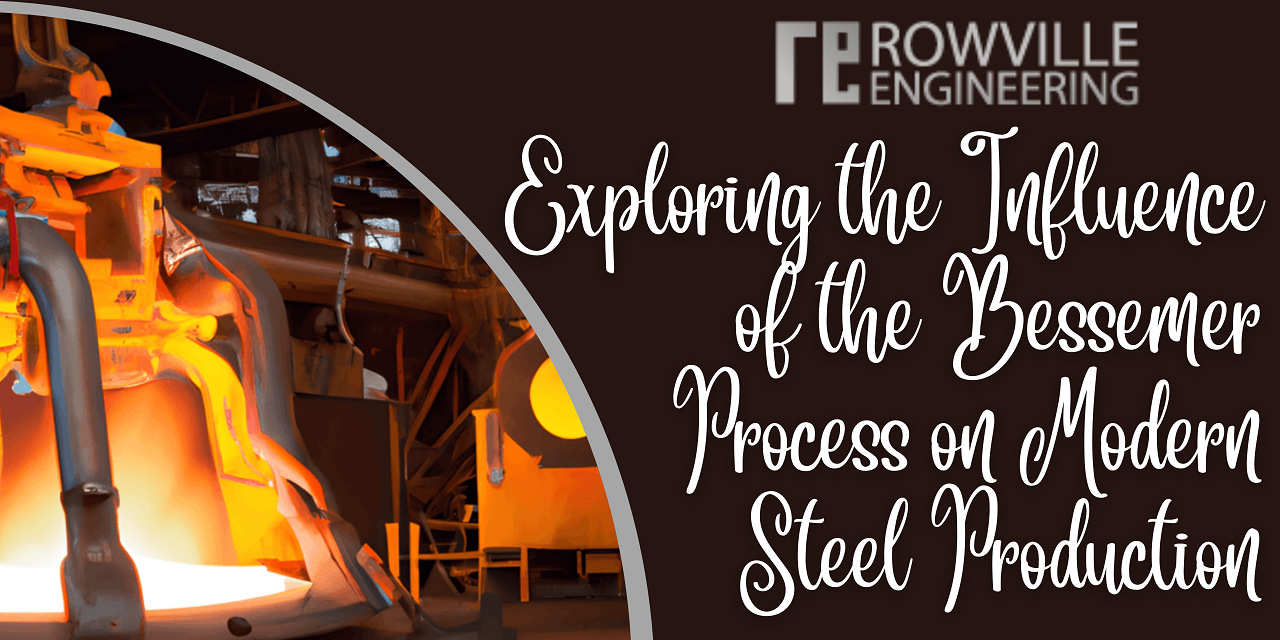Exploring the Influence of the Bessemer Process on Modern Steel Production
The Bessemer Process is a revolutionary steel-making process that has significantly impacted modern steel production. Invented by Henry Bessemer in the mid-nineteenth century, the Bessemer Process was a groundbreaking advancement in steel production technology.
Published On:12-12-2022

It allowed for the creation of large quantities of steel in a shorter amount of time and at a much lower cost than previously possible. This revolutionary steel production technology has had a lasting influence on steel production. The Bessemer Process has been an essential factor in the development of modern steel production methods, and it has enabled the production of steel at a much larger scale than ever before. By improving the efficiency of steel production, the Bessemer Process has allowed for the production of steel in vast quantities, with a much higher level of quality than was previously achievable. This article will explore the influence of the Bessemer Process on modern steel production, and how it has helped shape the steel industry as we know it today.
Overview of the Bessemer Process
Steel production in the 1800s was limited due to the lack of a method for mass-producing steel. This all changed with the invention of the Bessemer process in 1856. The process used air instead of charcoal to remove impurities from molten pig iron, which made steel production much cheaper and more efficient. This new process increased the steel demand and ultimately helped shape society as we know it today.
Impact of the Bessemer Process on Modern Steel Production
Modern steel production is largely a result of the Bessemer Process, which was developed in the mid-1800s. The Bessemer Process uses molten pig iron to create steel. This innovation eliminated the need for charcoal as a fuel and decreased the time it took to produce steel from hours to minutes.
In addition, the Bessemer Process revolutionized production by making mass production of steel possible at a low cost.
Benefits of the Bessemer Process
The Bessemer Process has been instrumental in the development of modern steel production. This process is used to create steel by blowing air into molten iron, making it possible to produce a new type of steel with a lower carbon content that is both stronger and lighter. The benefits of this process are significant: the production costs are reduced and the quality of the steel can be customized for different purposes, such as construction or manufacturing.
Challenges of the Bessemer Process
One of the major challenges of the Bessemer Process is that it can result in steel that is brittle and inflexible. This means the steel may break easily, or snap back to its original shape when bent. Additionally, the process can create low-quality steel with a higher proportion of impurities than desired. If not properly removed by a subsequent process, these impurities can result in corrosion and pitting after being exposed to outdoor elements for long periods of time.
Evolution of Steel Production Since the Bessemer Process
Steel production in the modern age has undergone a significant evolution since the Bessemer Process was introduced. The Bessemer Process allowed for steel to be produced in large quantities with a more consistent composition, changing the way steel is used in everything from buildings to bridges.
Future of Steel Production
Steel production is evolving at an ever-increasing pace. The Bessemer process has made steel production more efficient and easier to produce, but it also emits high levels of carbon dioxide. Steel production may look different in the future with new methods of producing steel that emit less CO2 and can be done more efficiently.
Conclusion
Modern steel production is largely shaped by the use of the Bessemer process, which was developed in 1856. The process creates molten metal by blowing air through molten iron, a process that removes impurities and vastly improves its quality. It's been adopted around the world as an industrial standard for steel production, but it's now being supplanted by less expensive modern substitutes like electric arc furnaces. The Bessemer process has had a tremendous influence on steel production today and will continue to shape this industry for years to come.